They have remained with us for centuries, having undergone only small changes. I offer 10 most revolutionary inventions, without which we we can no longer live. 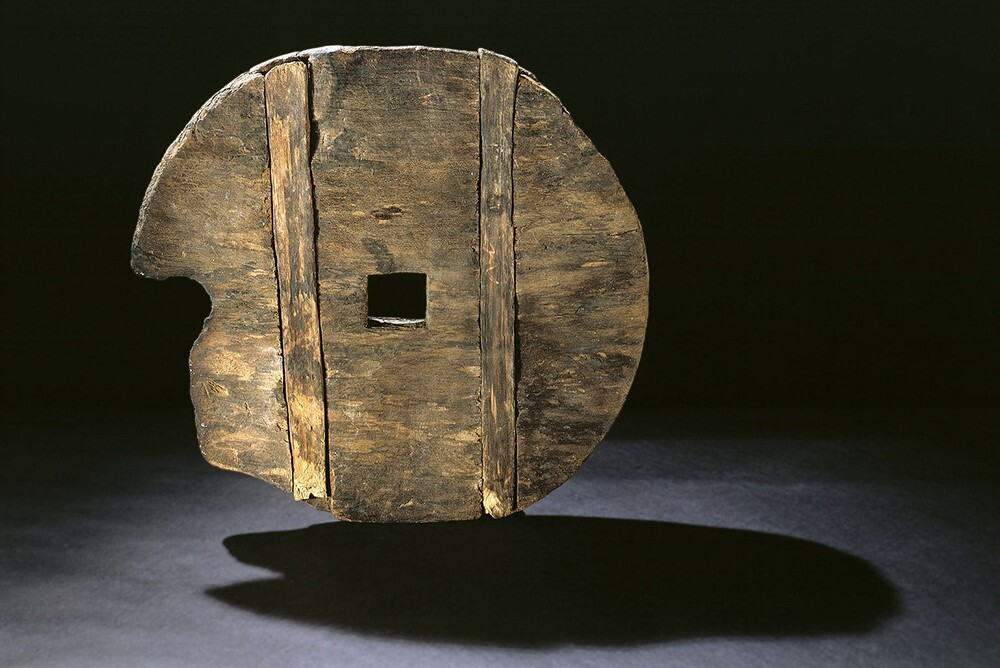
Wheel Neolith
The history of the wheel is lost in the ages, like the ancient wheels themselves - who and when invented this greatest miracle of engineering is unknown. Evidence of the first wheels made from a single piece of wood (lighter knitting needles appeared much later) belong to the territory of modern Slovenia. At least 20 km south of Ljubljana, the oldest a wooden wheel, whose age is about 5350 years. Scientists have determined that it had once been part of a cart.
Wooden wheels of a slightly later date were also found in Syria, in the territory of the former Mesopotamia. One of the oldest in this region were discovered during excavations of the Al-Hasek settlement, and dated XXXIII-XXXII centuries BC. e. Looks like wheels in Mesopotamia and Europe appeared almost simultaneously. Many scholars, however, believe that the cradle of civilization, Mesopotamia, they still arose earlier.
The wheel is the basis of transport: it has become easier to transport people and goods, and the tactics of warfare have also improved - combat chariots.
IV-II millennium BC:
Potter's wheel 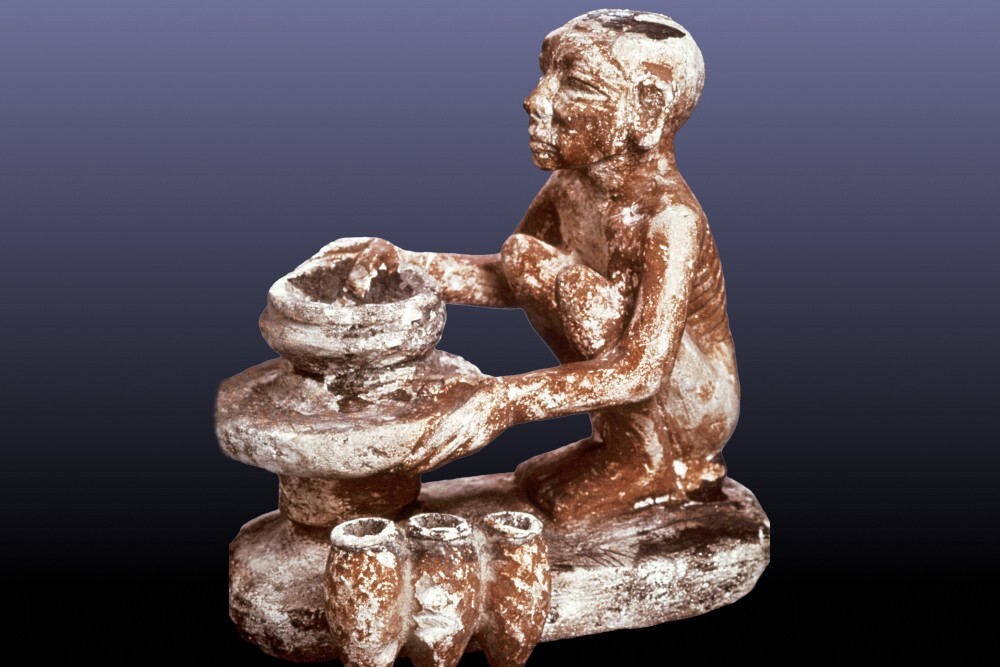
In Mesopotamia, and also almost simultaneously in Egypt and India in IV-II millennia BC. e. a potter's wheel arose, impossible without the invention of the wheel. First, a hand circle appeared, and then a foot circle. The latter consists of a vertical shaft and two discs - at the top and bottom. At the top, the potter molds clay, and the bottom one pushes with his feet to rotate the structure.
The invention of the potter's wheel has changed the world for at least the appearance of the wheel itself and wheeled transport. Now manufacturing dishes could be put on stream, which led to its reduction in price and trade development.
It is interesting that in Rus' the potter's wheel, which was called the circle, appeared rather late - only by the 9th-10th centuries.
105: paper 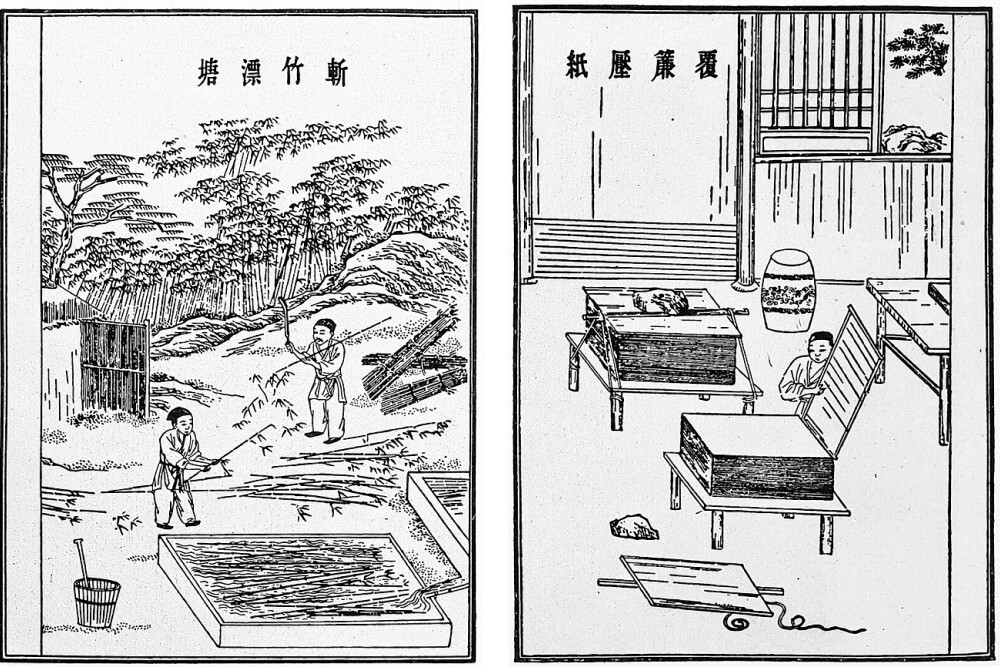
Papyrus, parchment or birch bark mankind has known since ancient times. But paper in its classic version appeared much later. And although something similar to it was made a long time ago in China, but everything was not the same: the “paper” from hemp got wet easily, from bamboo it was heavy, and made of silk - fabulously expensive. The invention of paper close to our understanding of the word, is attributed to a dignitary of the Han Empire by named after Tsai Lun, who was instructed to clean up the "paper industry". And he pointed. And they helped him in this ... wasps.
An observant official noticed that the material from which insects build their nests, has a light color, is strong, light and does not gets wet from the rain. He also determined its composition: wood, vegetable fibers and saliva of wasps, which has water-repellent properties. After spending hundreds of experiments, the resourceful Cai Lun came to the conclusion that a similar mixture can be obtained from the bark of a mulberry tree, hemp bast, rags, mulberry fibers and wood ash. Mix everything, and then, as in famous advertisement, just add water. The resulting "porridge from an ax" Lun laid out on a sieve, dried in the sun, and then smoothed with the help of stones.
9th century: gunpowder 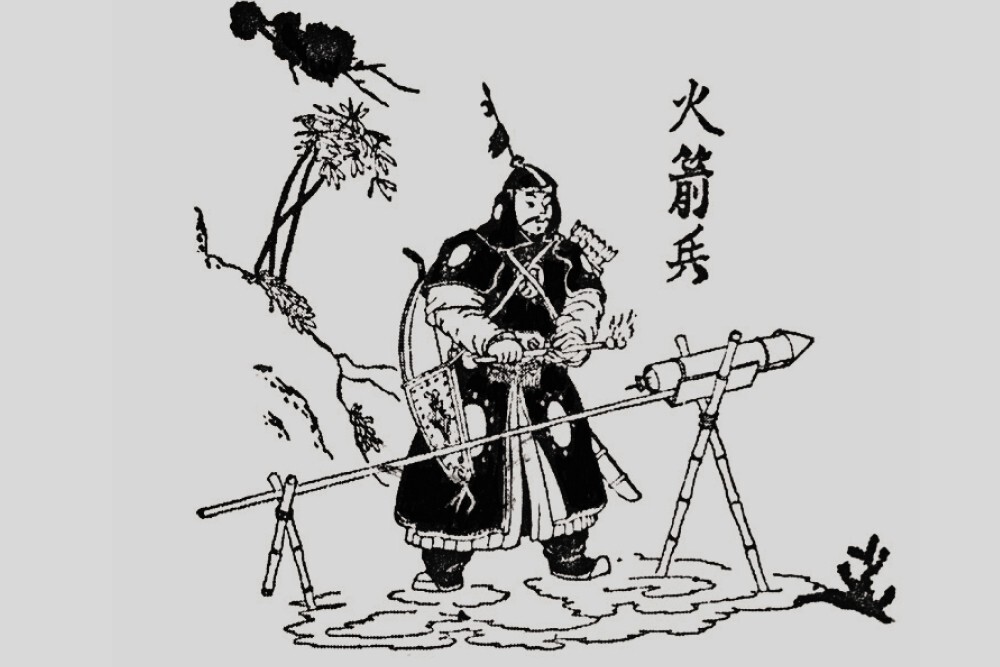
The substances that make up gunpowder were known in China even in antiquity. So, the inhabitants of the Middle Kingdom used sulfur and saltpeter for preparation of medicines since the middle of the 1st century AD. e. With the help of such mixtures, Chinese monks and alchemists tried to discover the elixir of immortality, and discovered gunpowder. By the way, the word "pinyin" ("gunpowder") is translated from Chinese: "fire of medicine" - for the burning properties of the composition. For the first time about It mentions the mid-ninth century Daoist text Zhenyuan miaodao yaolüe. Soon they guessed to use the composition on the battlefield, and not in the cloisters Aesculapius. And also on the squares during the holidays. After all, thanks to gunpowder in the XII century in the same China fireworks were invented. And also - early samples of firearms, the role of which for history and needless to say: thanks to new ways of fighting, the world map rewritten hundreds of times.
17th century: steam engine 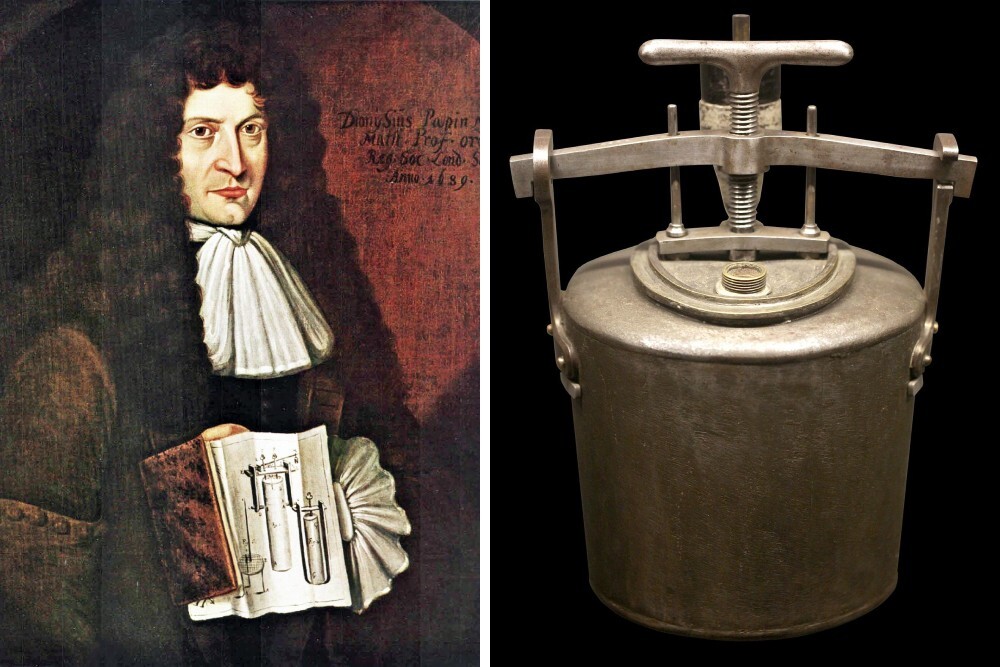
The first steam engine was an external combustion heat engine. appeared in the 17th century. It was built by the French mathematician and physicist Denis Papen. It happened in 1690.
The Papin steam engine was a cylinderr s piston, which rose under the influence of hot steam, and fell by atmospheric pressure after exhaust steam thickening. IN As a result, the engine did useful work due to heating and condensate. And although Papin suggested the main elements of the design famous German mathematician Leibniz, French inventor collected all together and for the first time used a safety valve for his engine valve.
All this seemingly unpretentious design has become one of the pillars of the industrial revolution - thanks to it, factories, mills and factories gained independence from water and wind energy. Appeared steamboats and locomotives, followed by ships. And although over time the steam cars replaced internal combustion engines, we are still surrounded by steam power. For example, it is widely used in many modern power plants.
19th century: electric light bulb 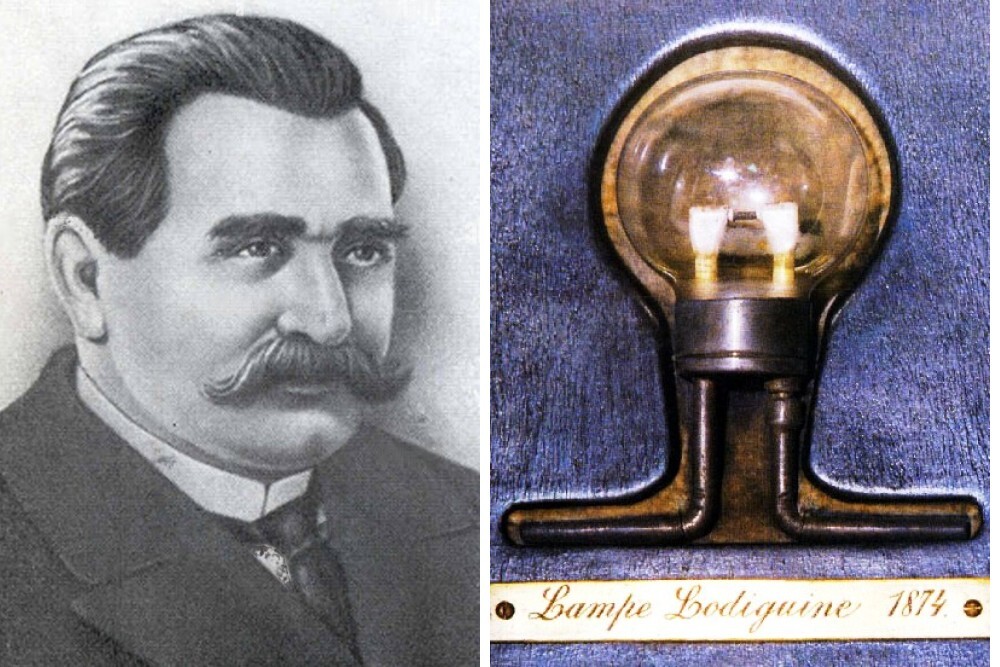
The paths of an ordinary light bulb in your chandelier are as inscrutable as history of its creation. Because she is a real "child of the regiment": she has many creators, including our compatriots.
It all started in 1840, when a British astronomer passed an electric current through a platinum wire placed in glass cylinder, and found that it glowed.
Then there was the Russian scientist Alexander Milashenko, who same year began the development of carbon filament. Then - the American John Starr, He received a patent in 1844 for a carbon-filament light bulb. AND it started: the invention was modified more than once, but still The light bulbs of those years worked poorly and burned out every now and then. Not surprising, that a race has begun among inventors - who will be the first to make a durable light bulb.
One of the first to "finish" was an engineer Alexander Lodygin, who received a patent for a filament lamp in 1874. AND only later, already in 1879, the American Thomas Edison created a lamp with service life of 40 hours. But our scientist did not give up even in the 1890s invented several types of lamps with tungsten and molybdenum filaments, and also thought of twisting them in the form of a spiral so that the lamp shone brighter, and pump out air from them so that it shines longer.
1876: telephone 
The American inventor Alexander Bell had many predecessors, including the creators of the telegraph, on the basis of which phone appeared. And yet it was he who, in February 1876, filed an application for patent for the invention of the telephone. But here's a coincidence: on the same day American Elisha Gray also claimed a patent for a “device for transmitting and reception of vocal sounds by telegraph method. Started to find out and it turned out that Bell was ahead of Gray by several hours (!), so the palm tree he got the championship. As well as patent number 174 465, which will be called the most expensive in history.
In general, the design of the very first phone resembled ... gallows. That's what they called him - "the gallows." He transmitted the sound very badly, but after filing a patent, Bell managed to modify the device. By legend, on March 10, 1876, Bell and his assistant Thomas Watson spent experiences. When they began to disperse into different rooms, Bell seemed to spilled acid from a battery on his trousers and loudly called Watson to help. He did not hear the shout live, but for the first time in history he heard it from receiver. Running into the room, he exclaimed: "I heard every word!"
19th century: anesthesia 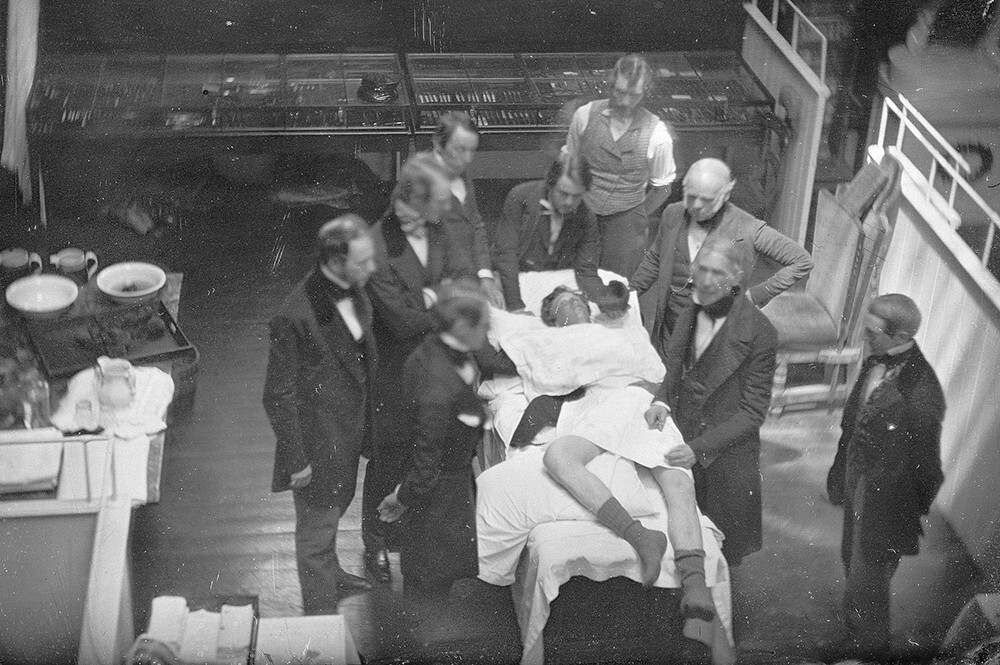
When the world's first anesthesia was applied, it is not certain known. But one of the first operations under general anesthesia took place in 1846. It was the removal of a mandibular tumor, and he spent it American dentist and surgeon William Morton. In the same year another an American and also a dentist, Horos Wells, removed a tooth from a patient under the same ether anesthesia. A year later, independently anesthesia in surgery was successfully applied by physicians: Doctor of Medicine Fedor Inozemtsev and the famous anatomist Nikolai Pirogov.
1928: antibiotics 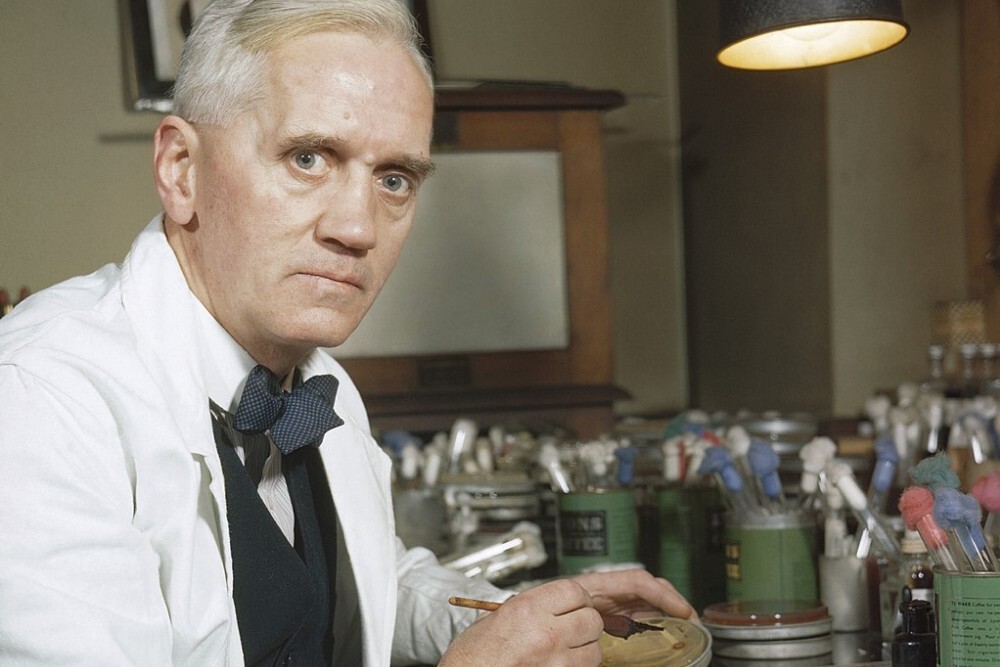
"To defeat fascism and liberate France, he did more than entire divisions, ”the Parisian newspapers wrote about him in 1945. "He" is the British microbiologist Alexander Fleming, who once sowed mucus from your own nose into one of the petri dishes with bacteria. Through a few days he found that in places where the mucus got, bacteria were destroyed. Later, the scientist found out why: the mucus contained a substance which he called lysozyme, a natural antiseptic.
But this was only the forerunner to the main discovery of all life Fleming and one of the main in the history of mankind. Idea about t
Add your comment
You might be interested in:





















